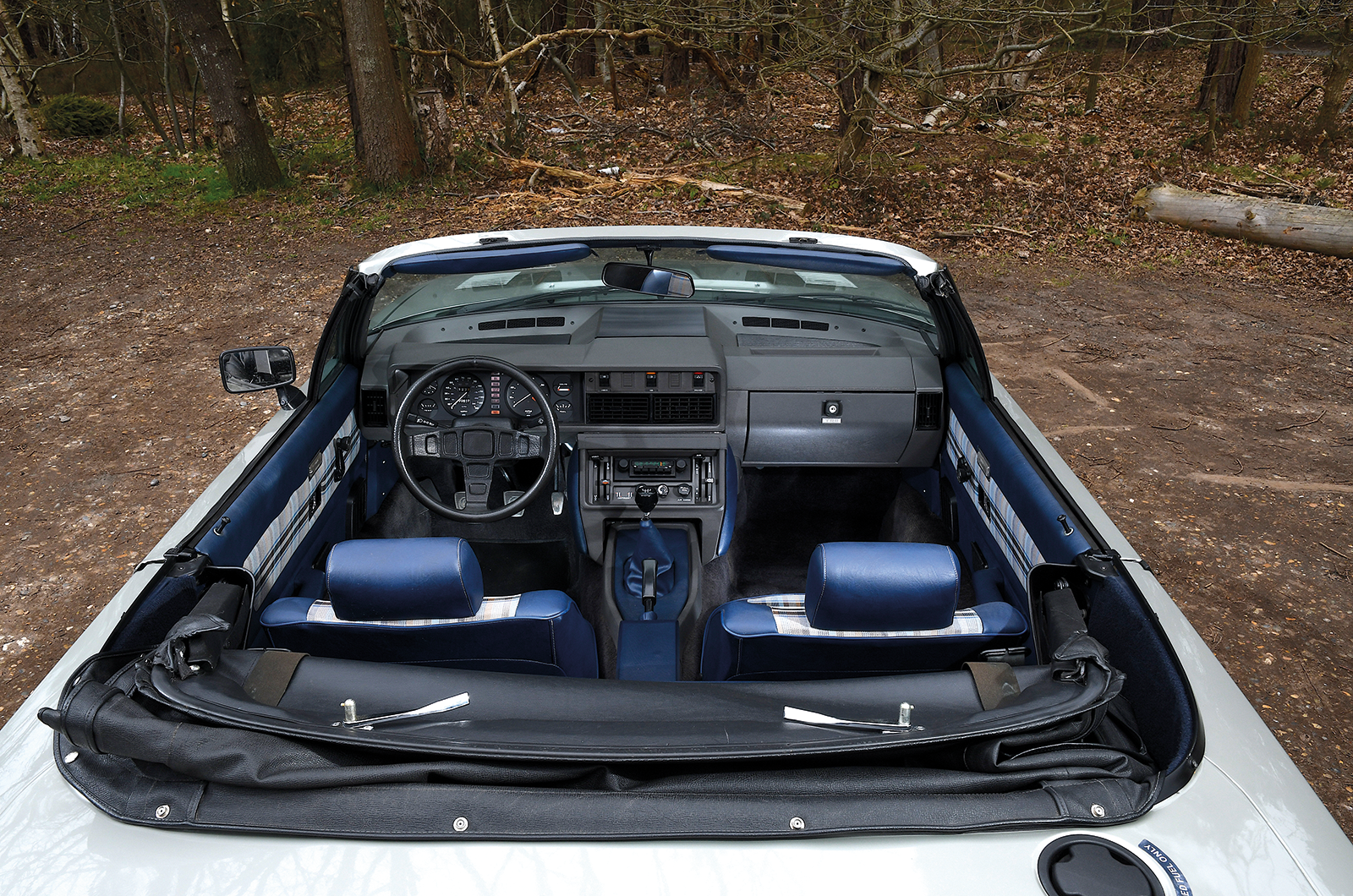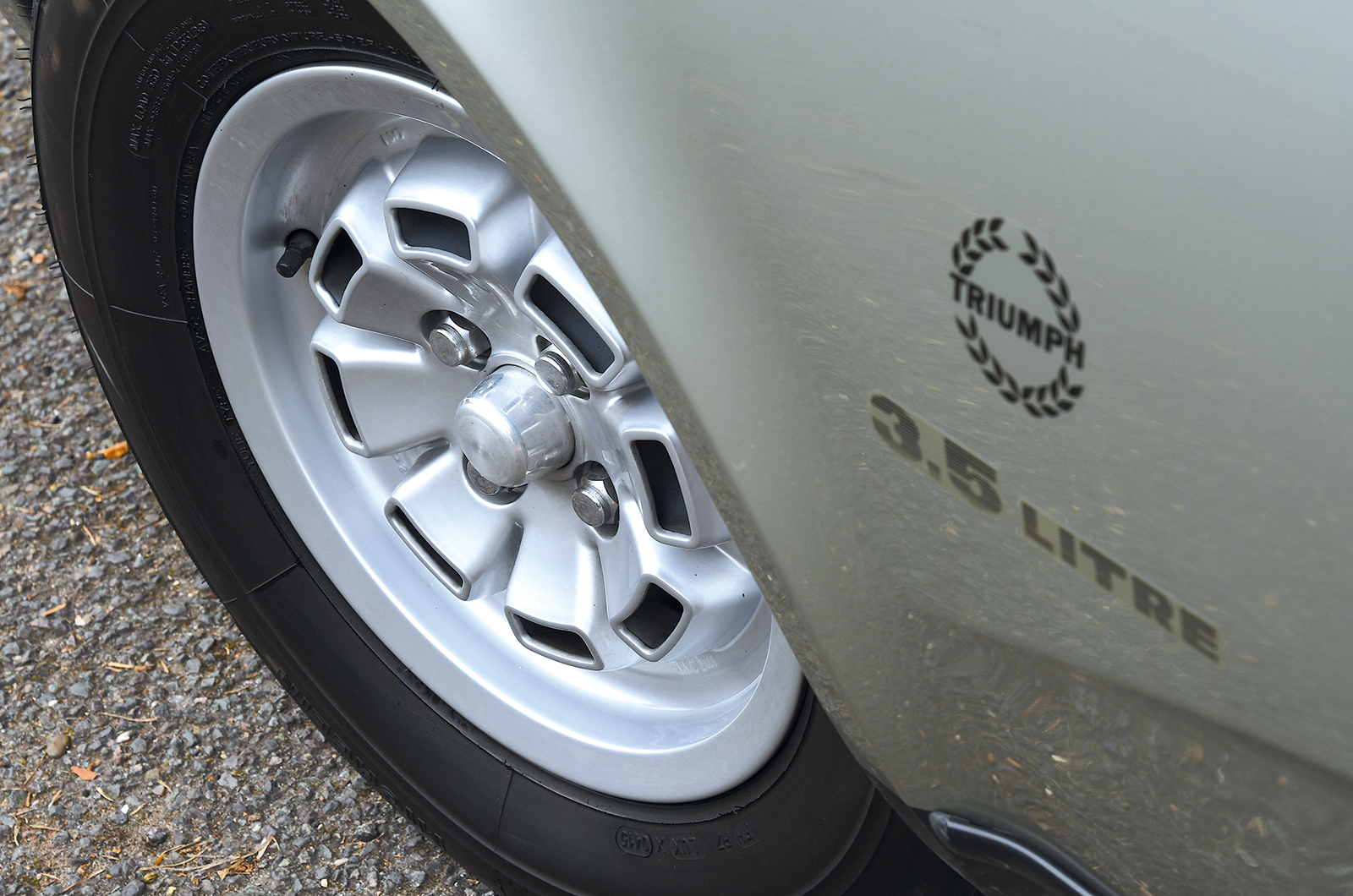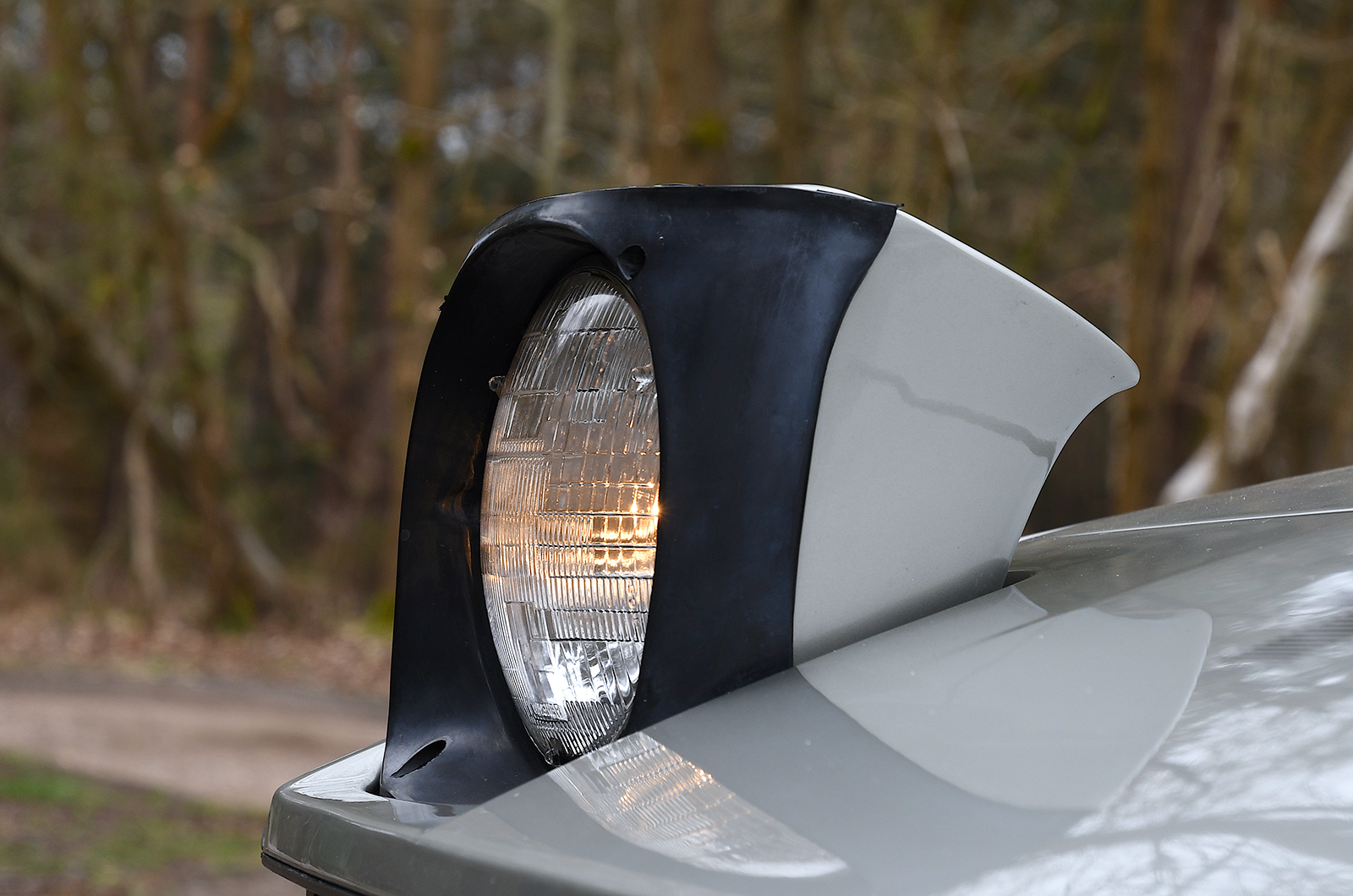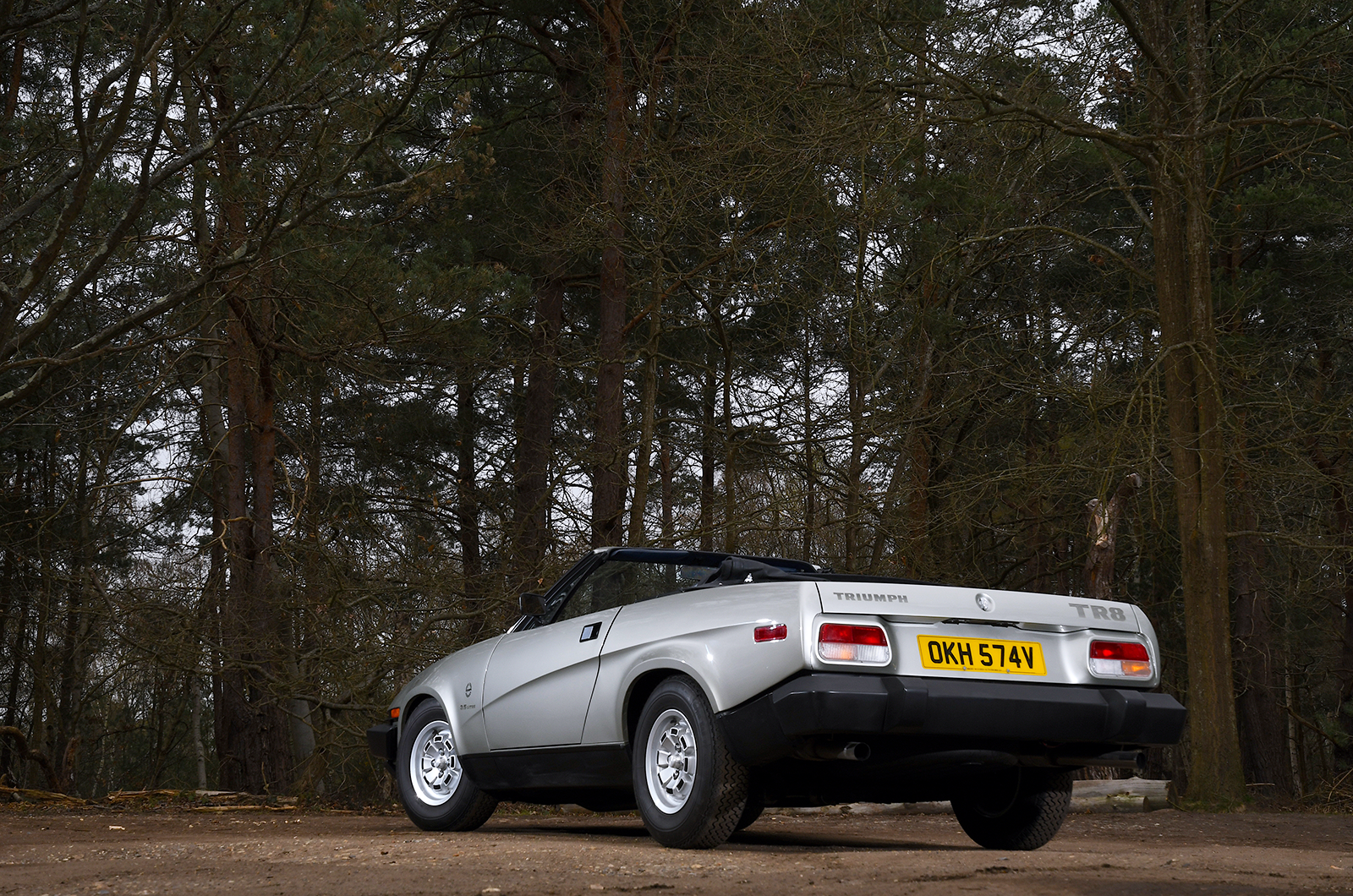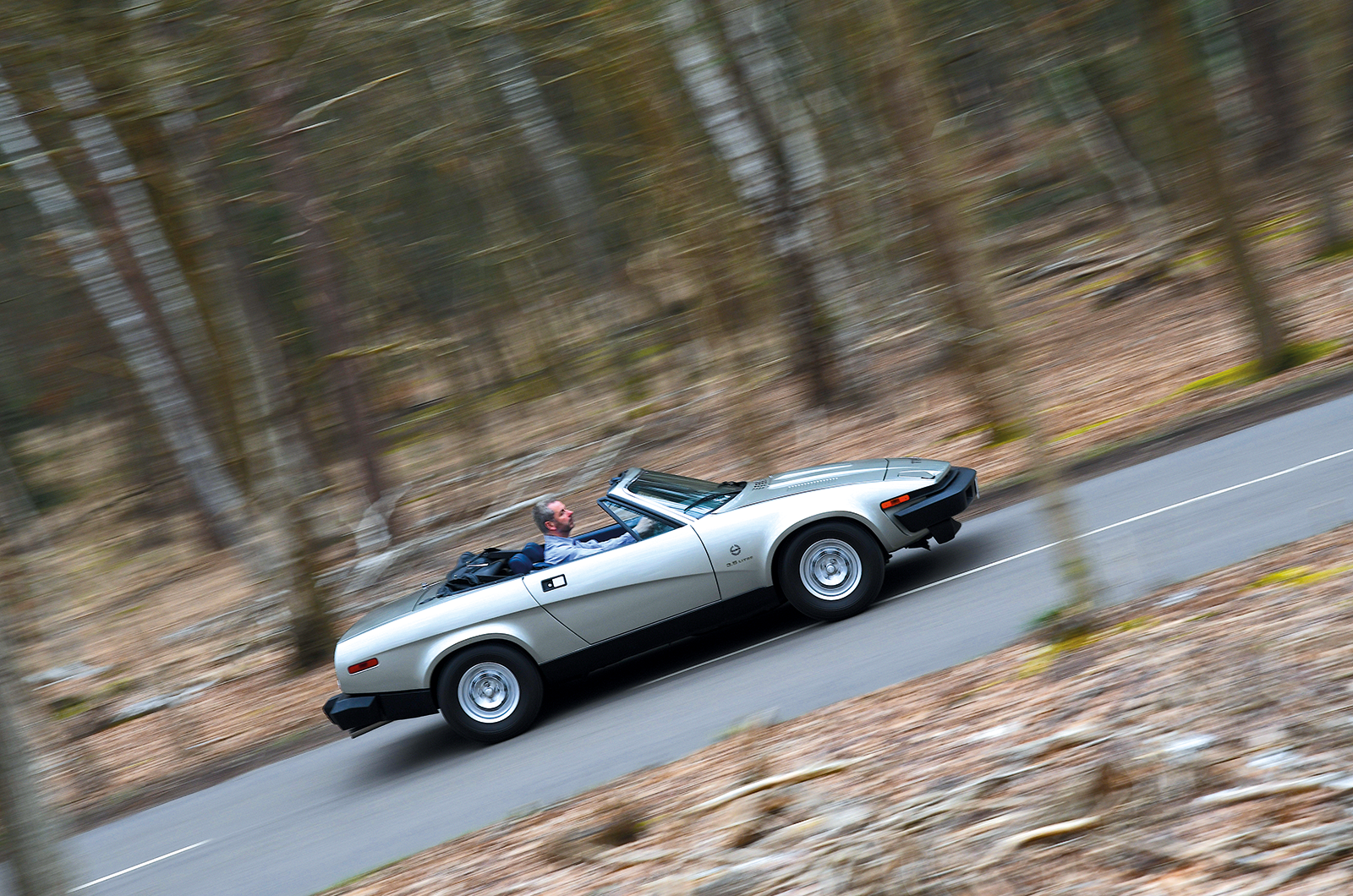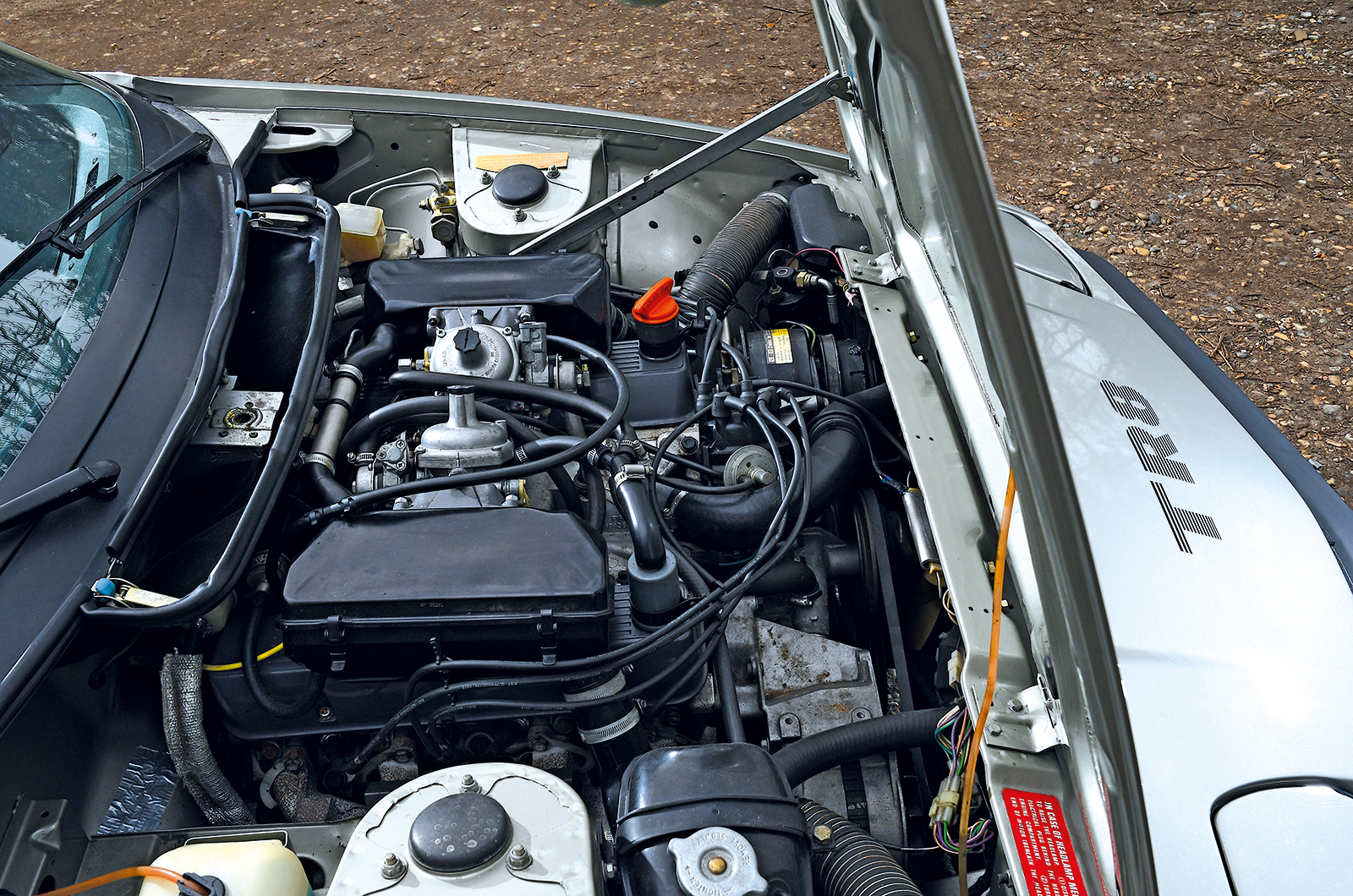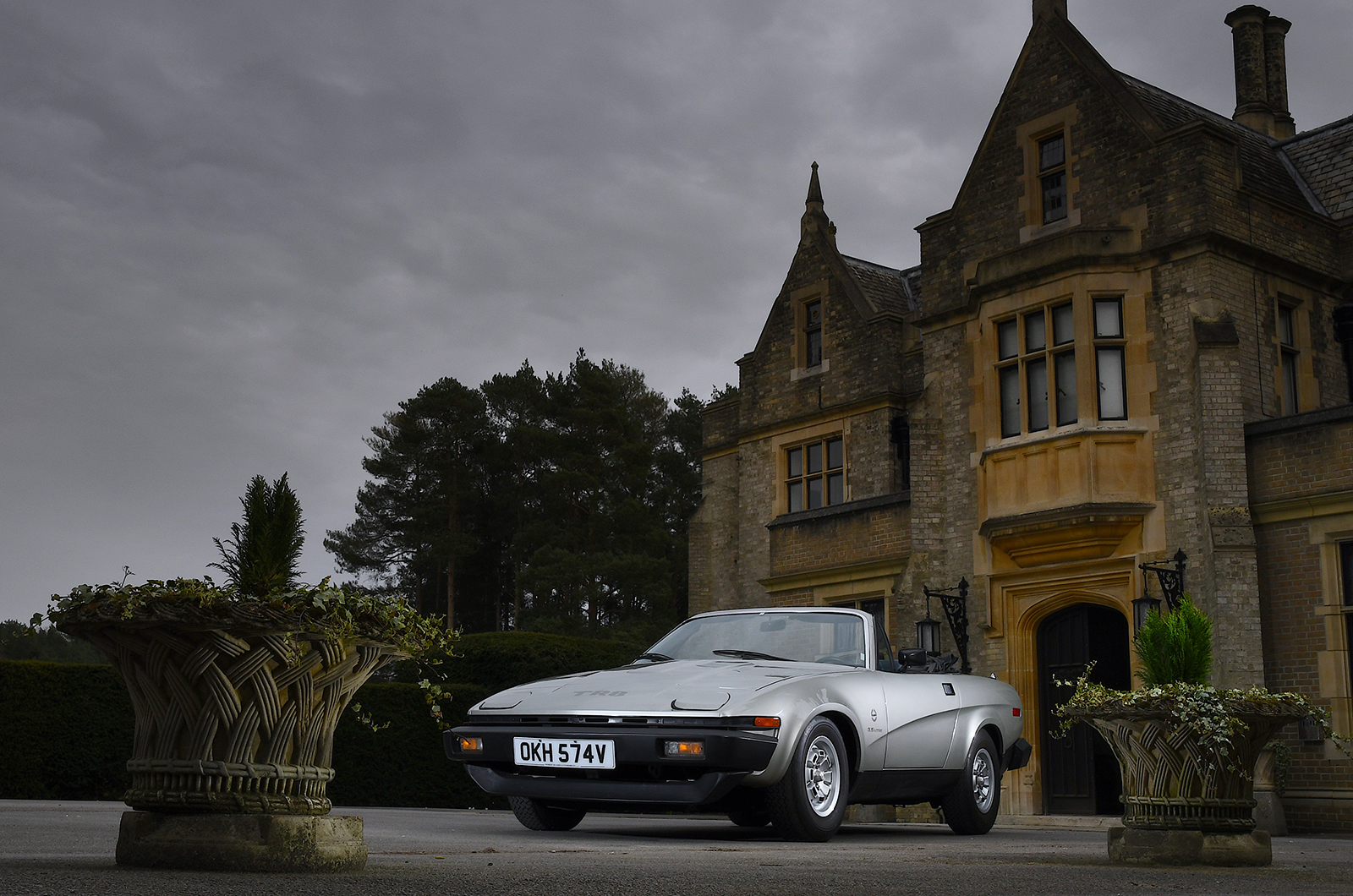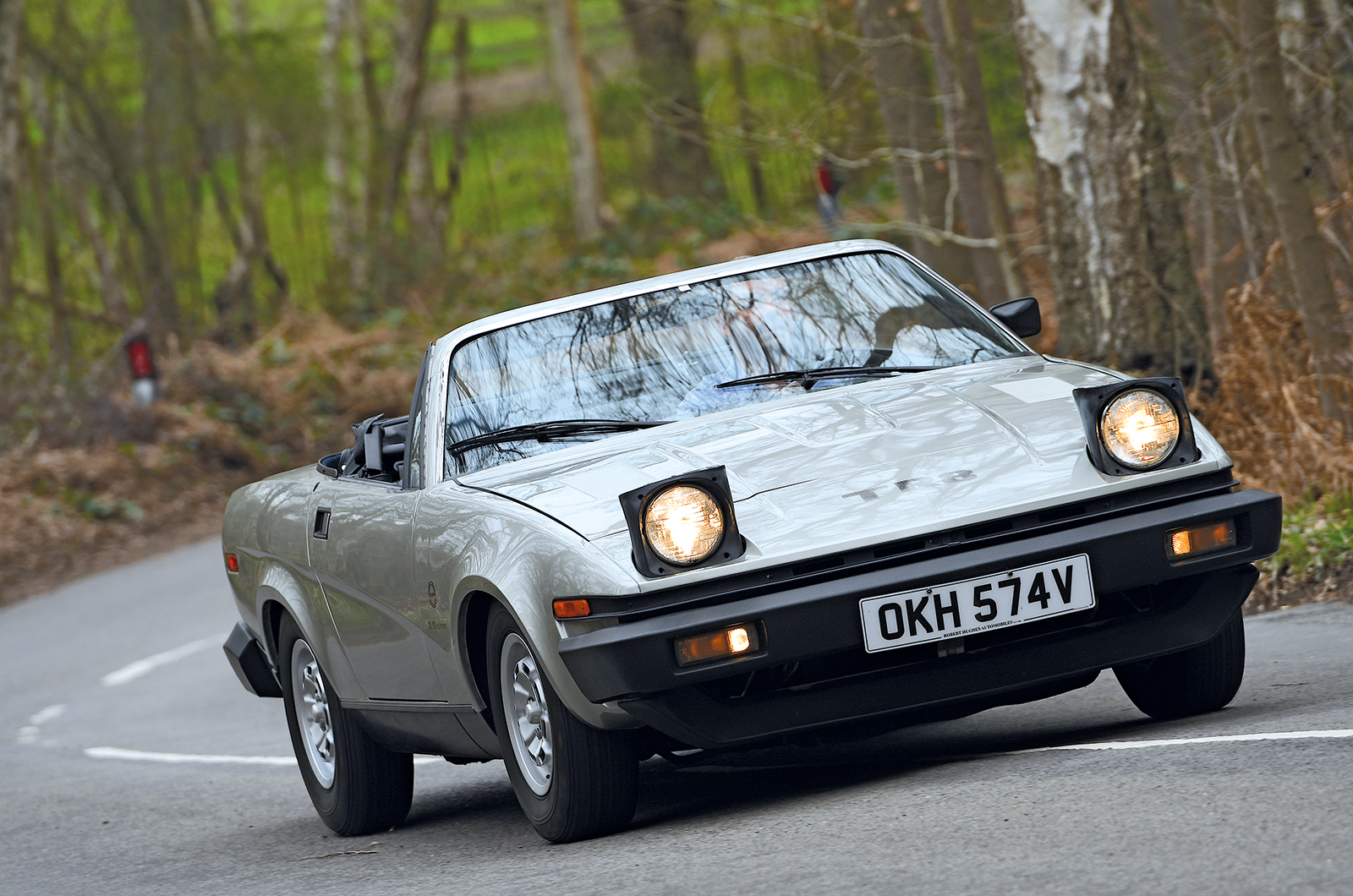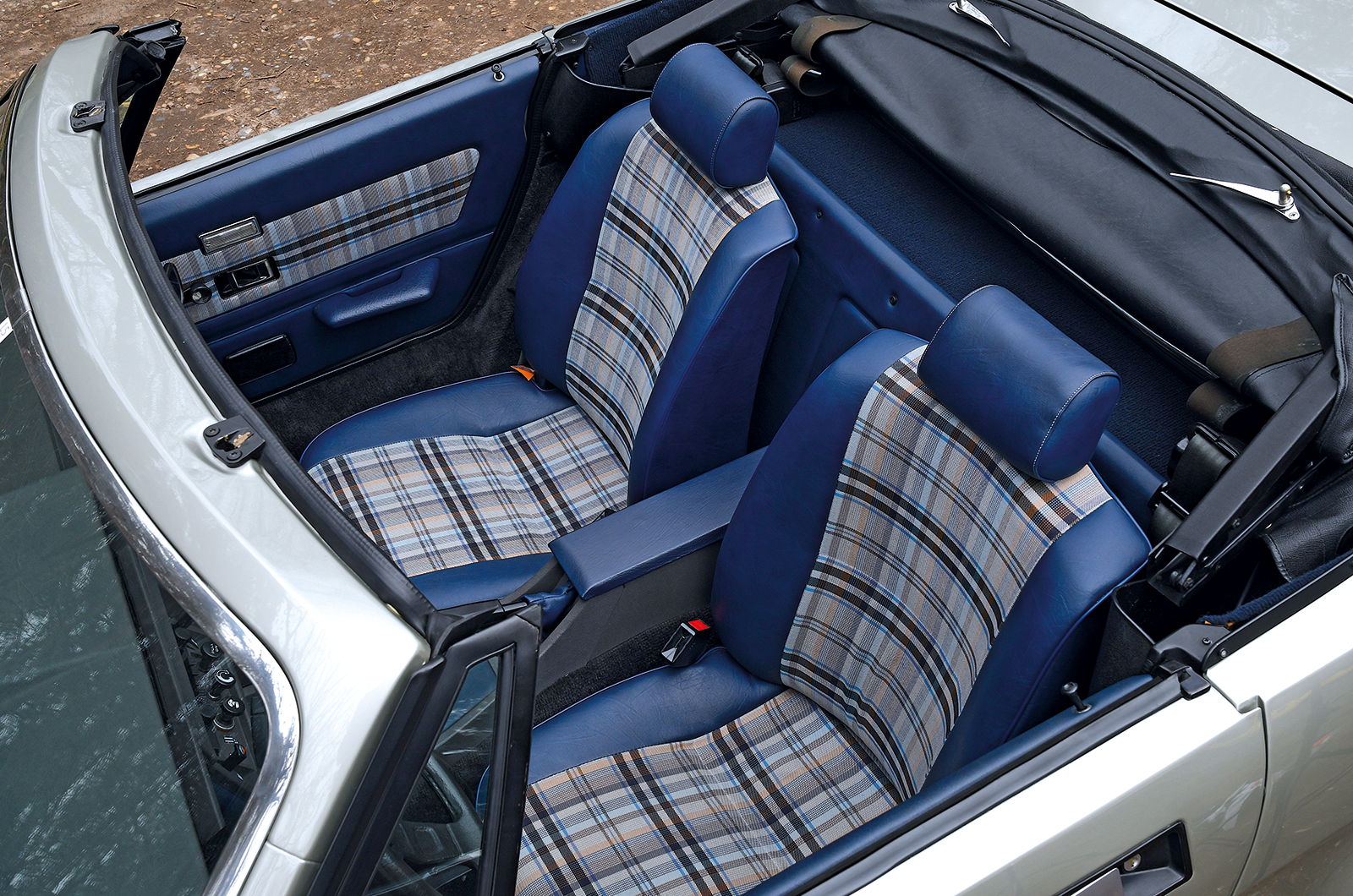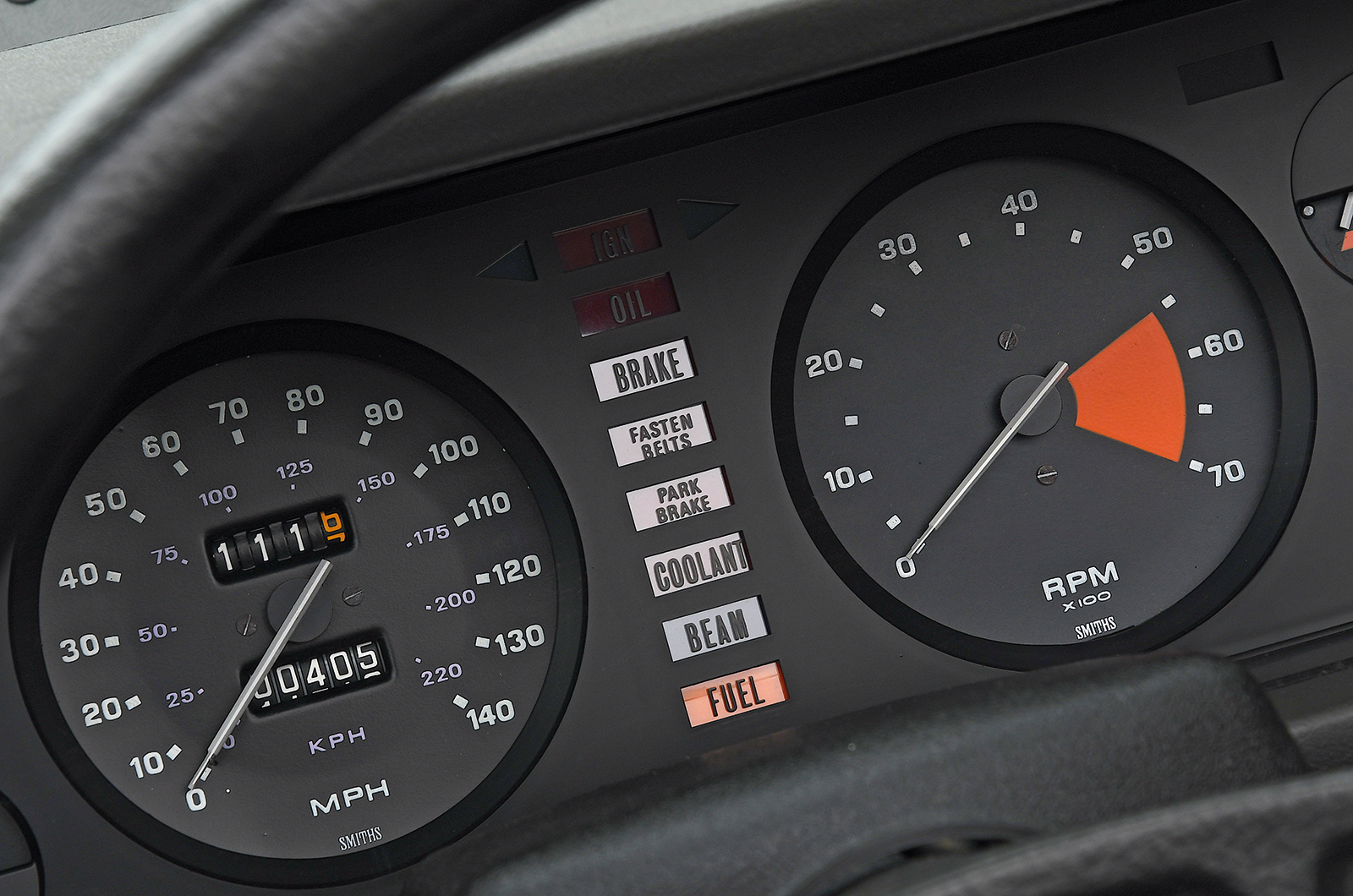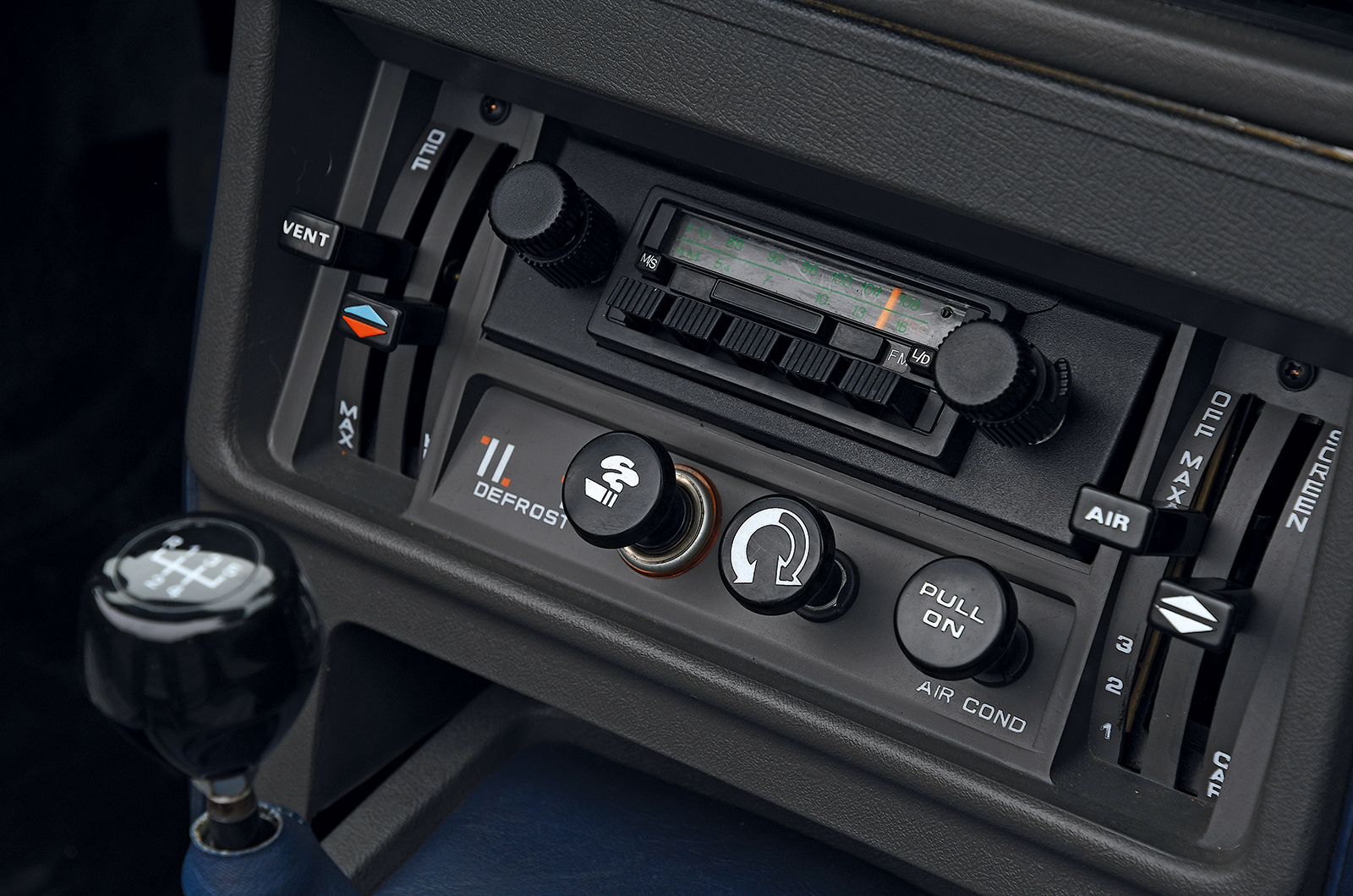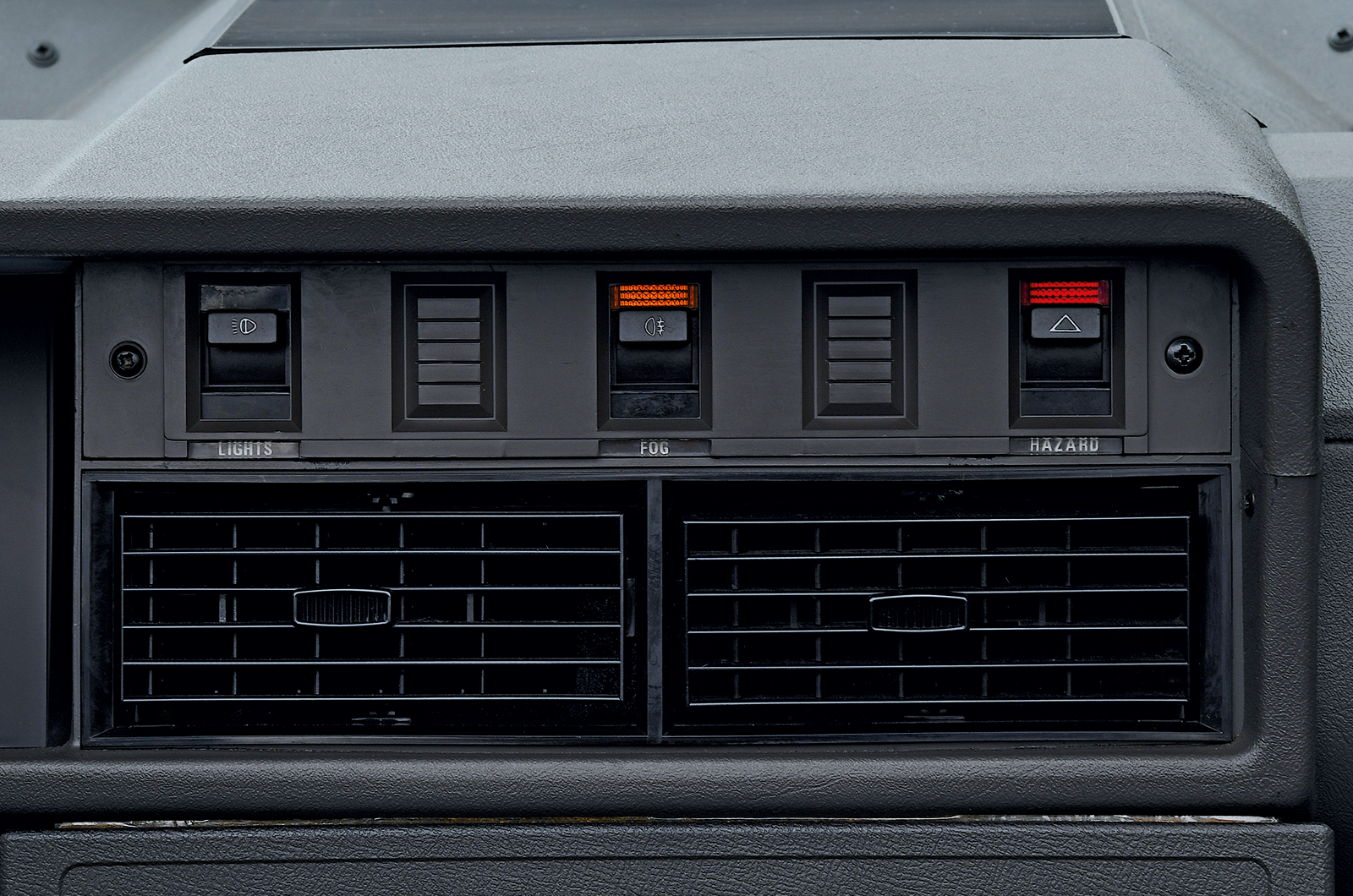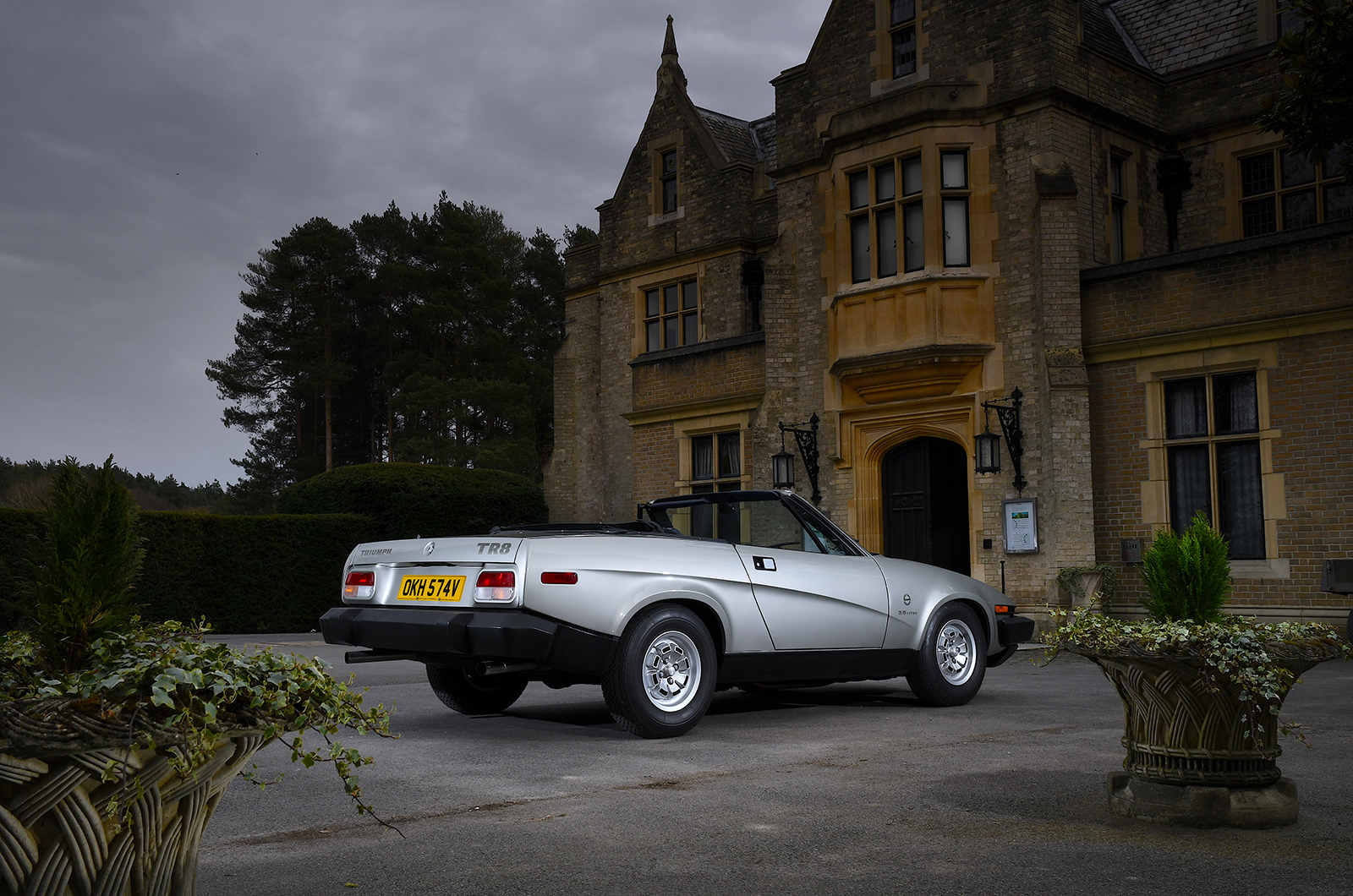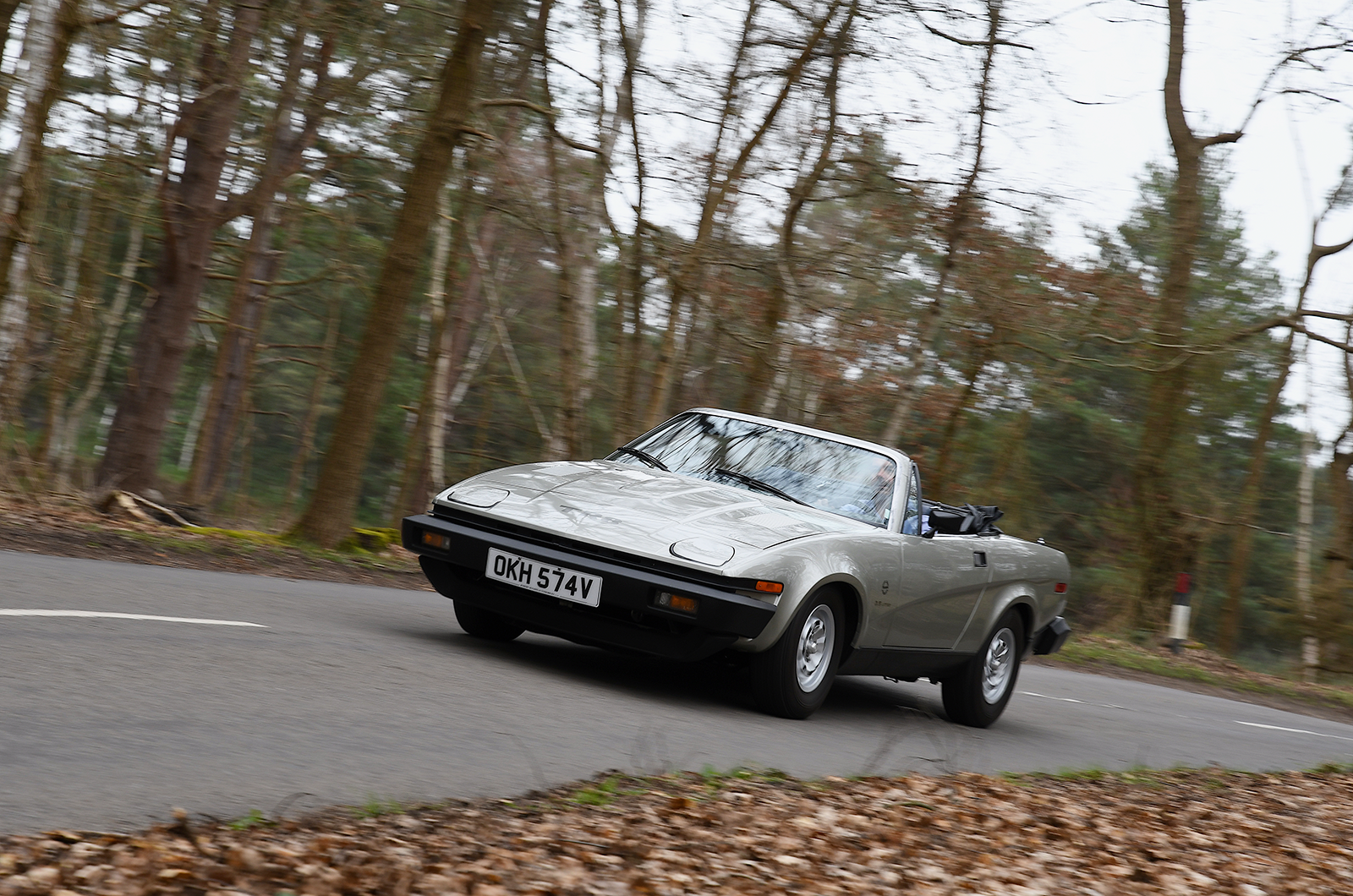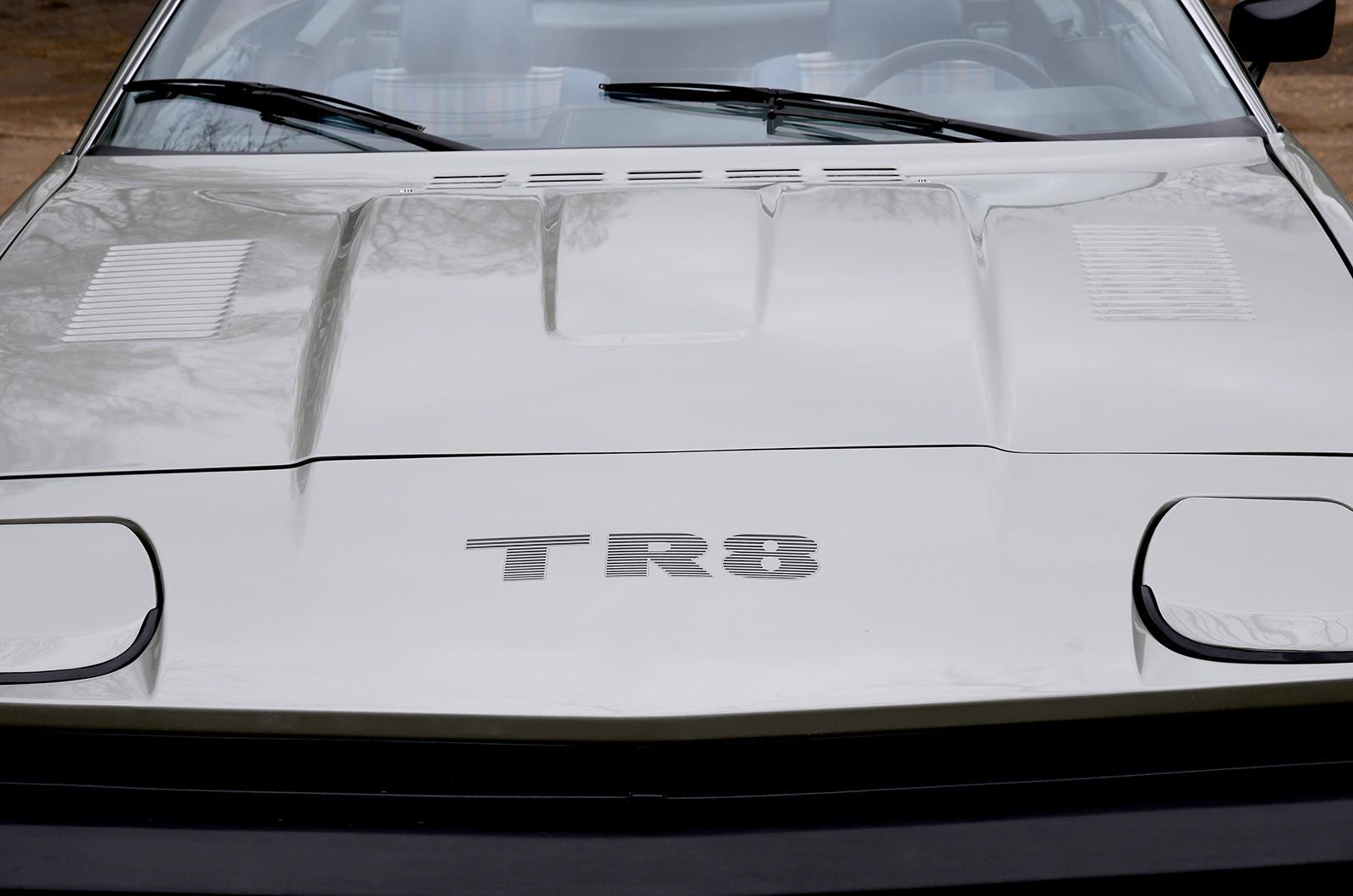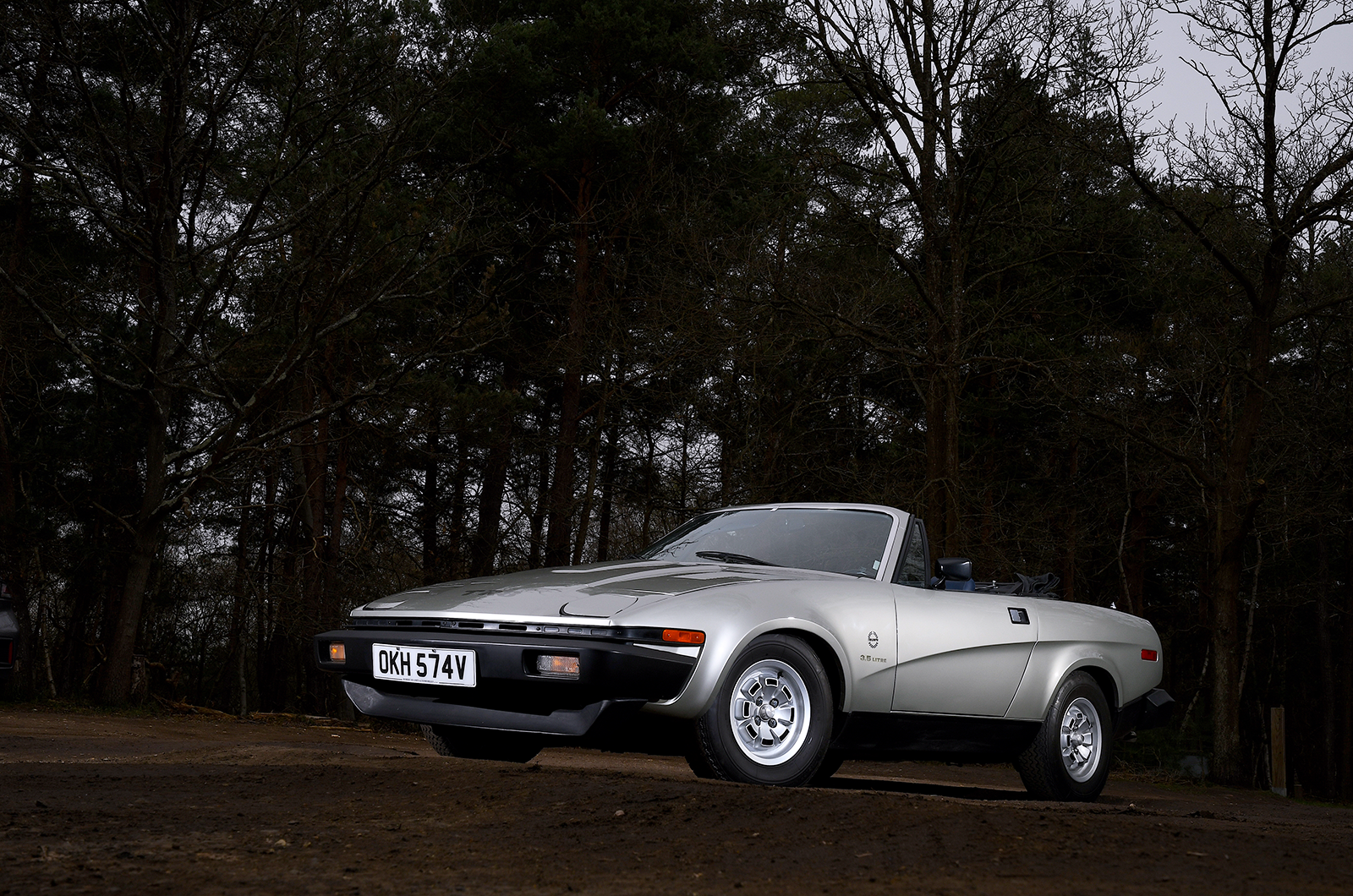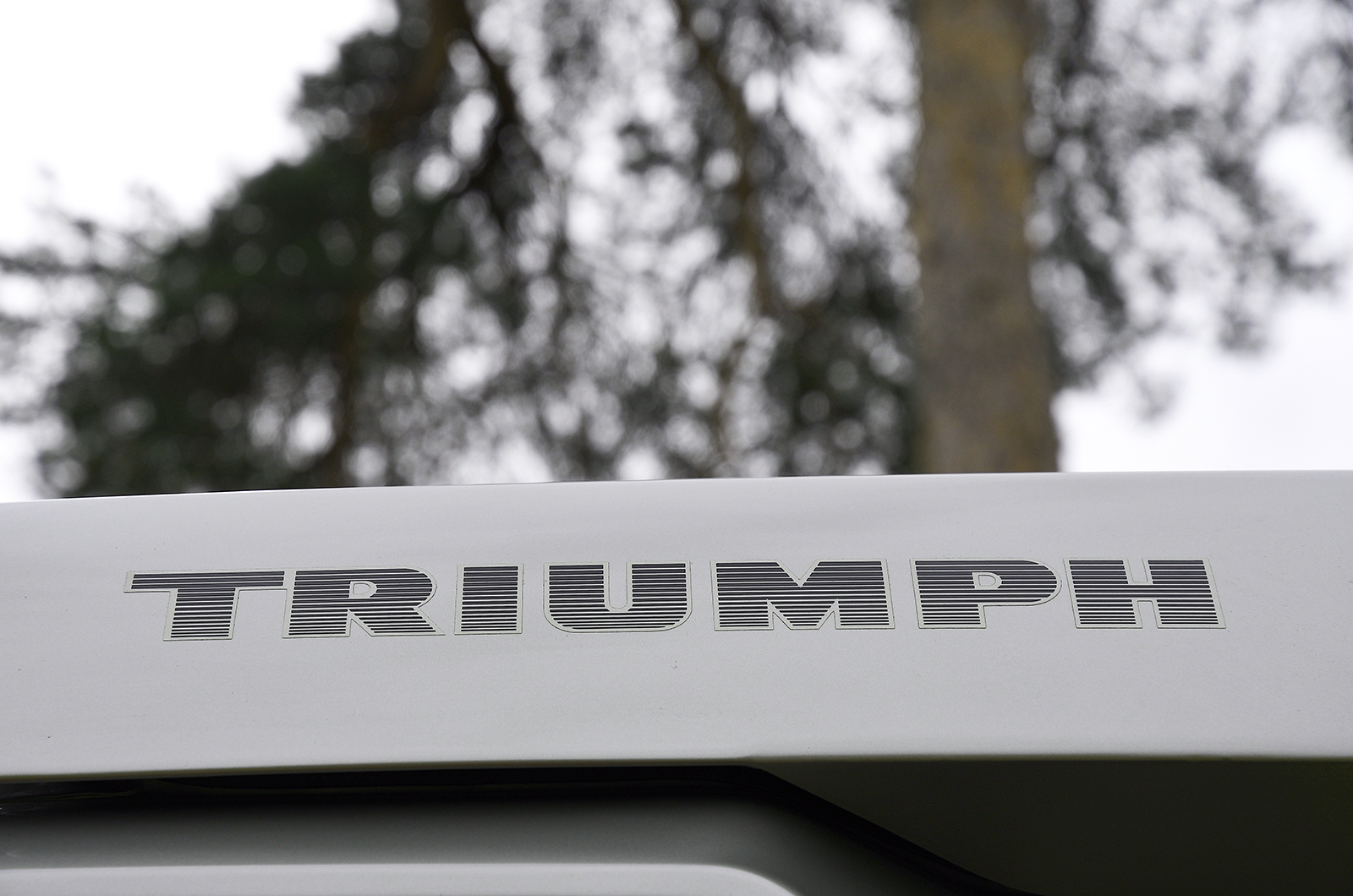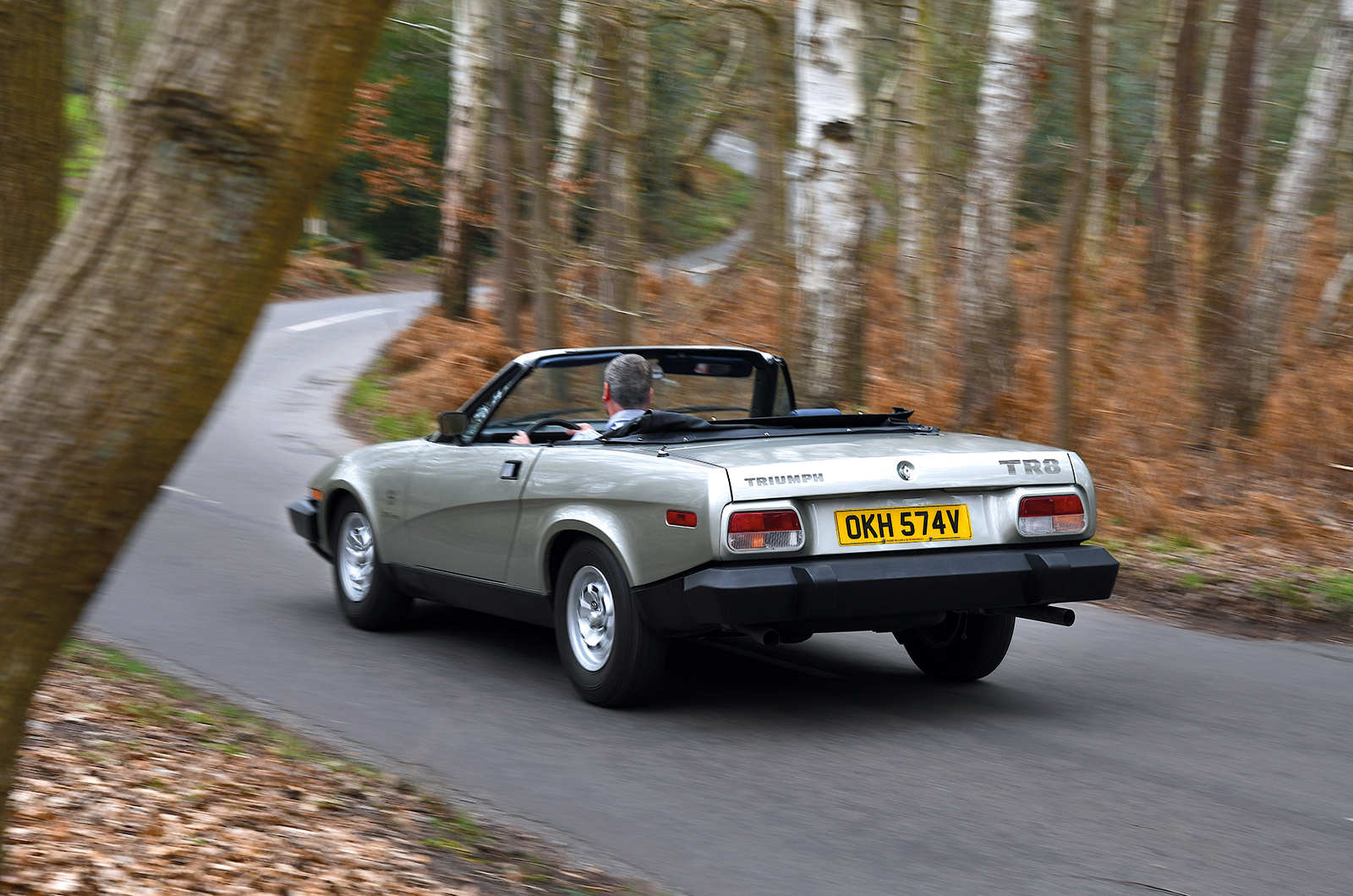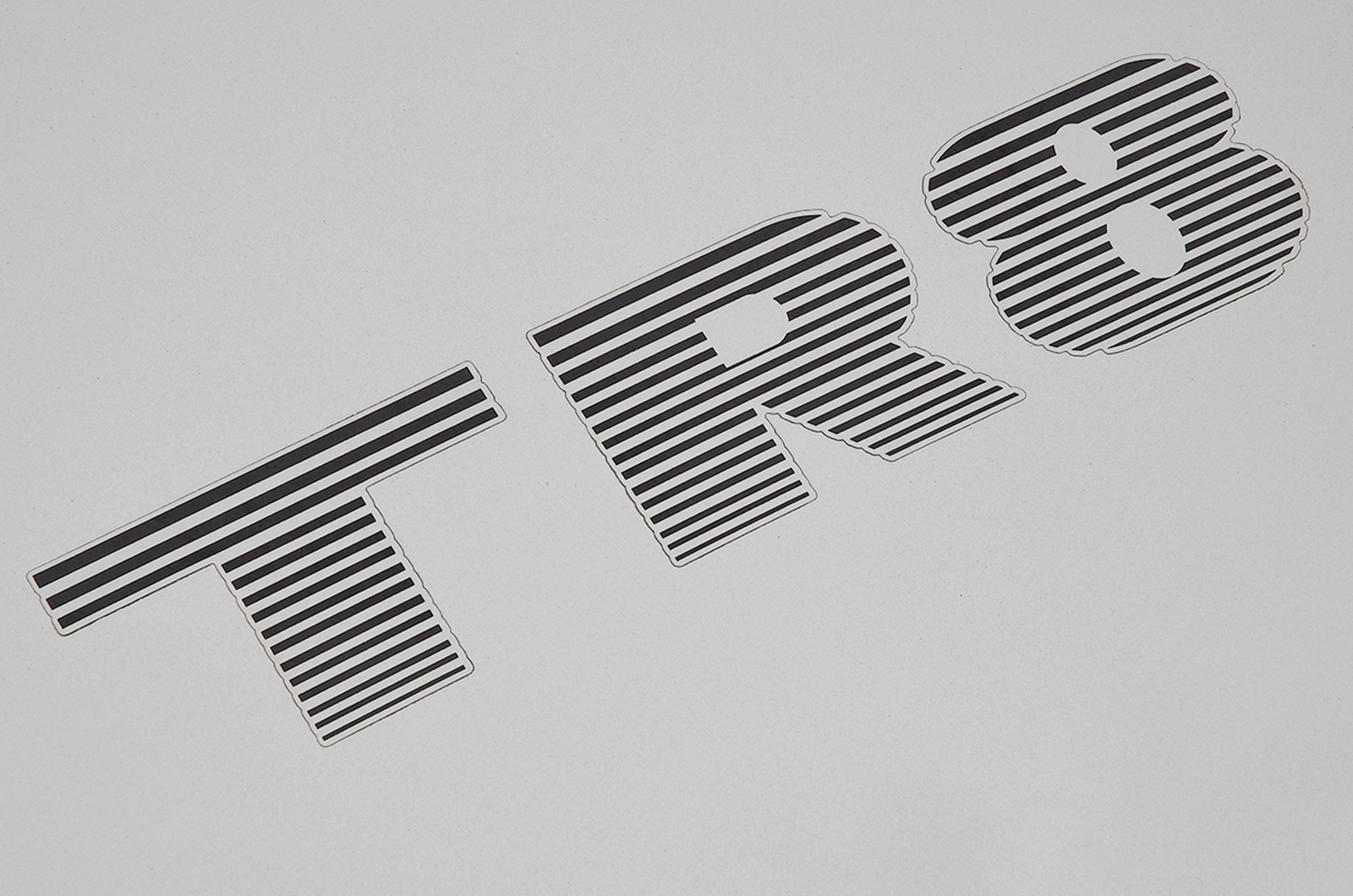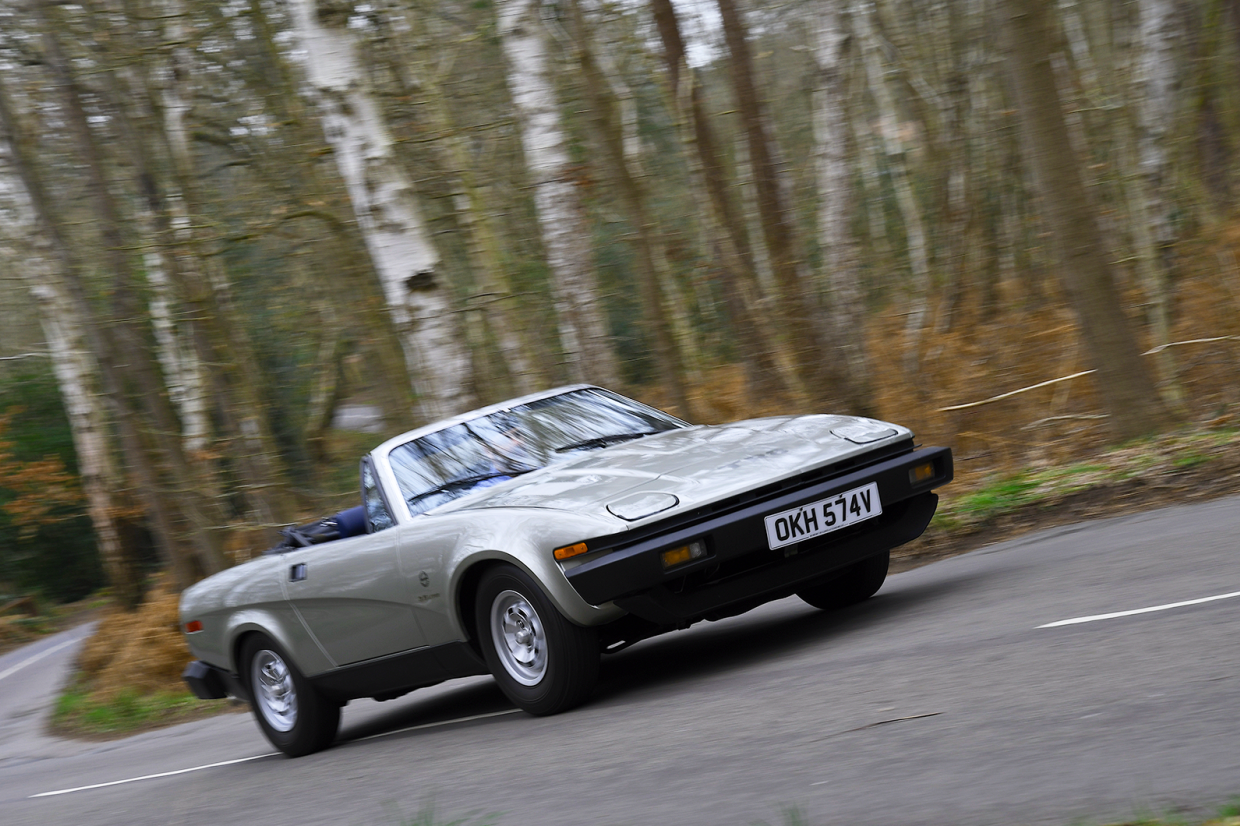
A quick dab of the brakes, haul the long gearlever back in a sweeping arc from third to fourth – carefully rather than quickly, they’re all like that sir – and bury the throttle again.
Onwards through the woods along the sun-dappled road ahead, the familiar sound of that bombastic Buick-derived engine reverberating around the trees.
Back on the brakes, hard this time, and ease through a tight right-hander before planting it again and trimming the wheel straight ahead.
Out here, with the wind whipping about the cabin and the eager eight-pot growl urging you forward, it’s difficult to imagine how such a wonderful sports car signalled the end not only of the TR, but the death knell for Triumph as a manufacturer.
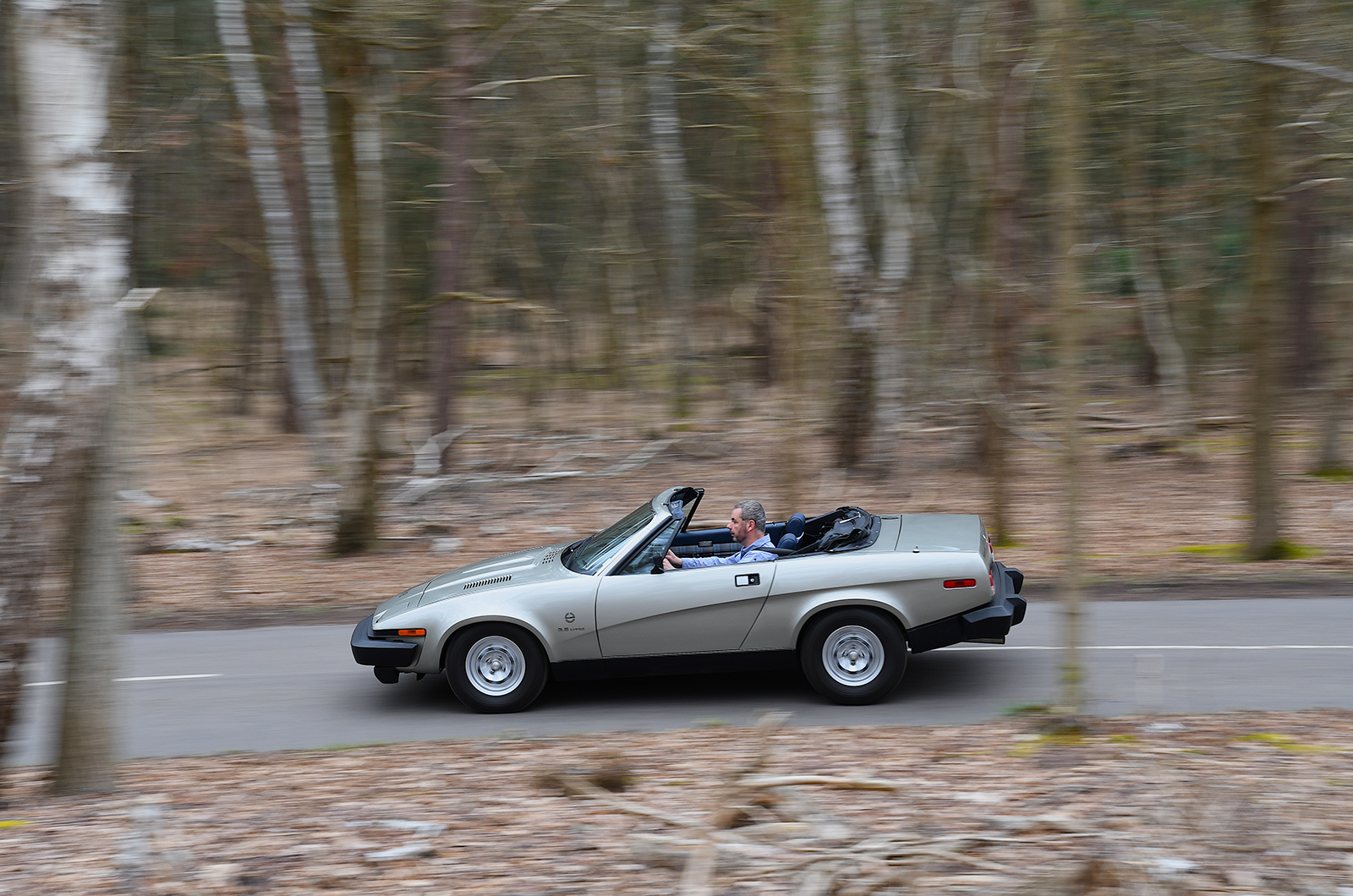
Looking back at the life of the British sports car, and British Leyland in particular, there’s something of the immovable object and the not so unstoppable force.
It’s akin to watching an ageing, rusting oil tanker ploughing slowly on to the rocks; a captain shouting different orders at 10 different deck hands, each running in a different direction.
Maybe, just maybe, it needn’t have been that way.

